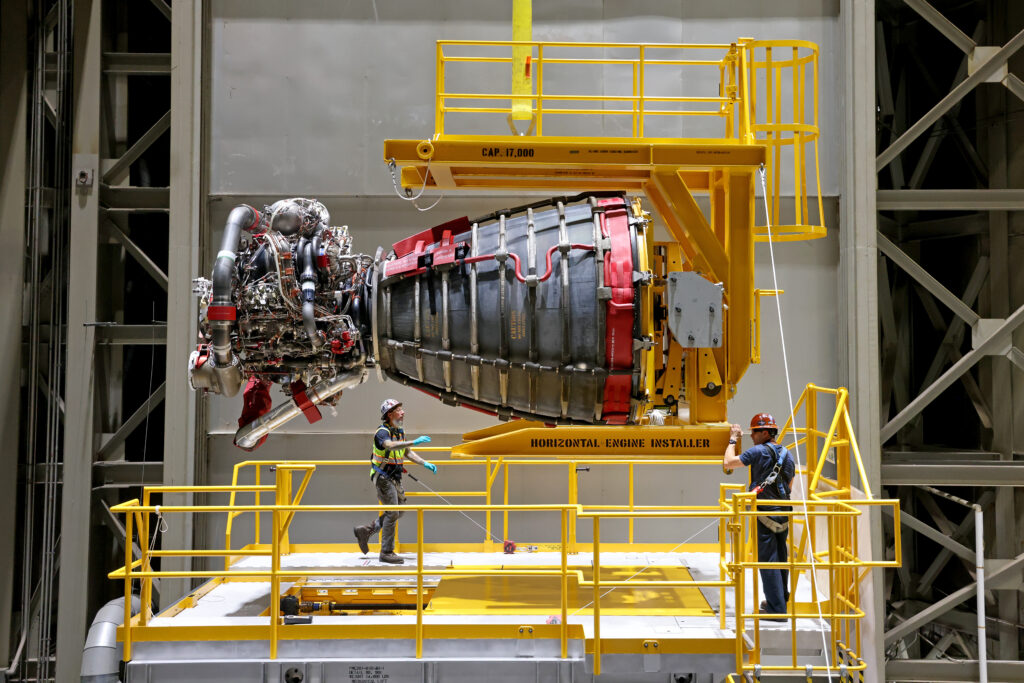
In this artist’s illustration, future Artemis astronauts explore the Moon’s south pole. A new report finds that NASA’s Moon to Mars effort is a significant driver of economic activity in the U.S. Credit: NASA
Research finds that $25.4 billion budget yields $75.6 billion in economic output.
For more than six decades, NASA has been at the forefront of scientific achievement, space exploration and aeronautic engineering. NASA’s accomplishments in space stand among the greatest engineering feats in human history. But beyond its contributions to humanity’s quest for understanding, NASA also plays a significant role in the U.S. economy, driving growth in the emerging commercial space sector, with ripple effects across the United States.
A recent study conducted by the Nathalie P. Voorhees Center for Neighborhood and Community Improvement at the University of Illinois at Chicago provides an assessment of those economic impacts overall, with a special look at the Moon to Mars campaign and investments in climate change research. This study, the third of its kind, examines data from Fiscal Year (FY) 2023.

William Vardaman, left, and Pat Brown, mechanical technicians with the Jacobs contracting team, perform engine maintenance on NASA’s crawler-transporter 2 on March 26, 2019, in the crawler yard located in Kennedy Space Center’s Launch Complex 39 area. Credit: NASA
“To invest in NASA is to invest in American workers, American innovation, the American economy, and American economic competitiveness,” NASA Administrator Bill Nelson said in a press release announcing the study’s results. “As we embark on the next great chapter of exploration, we are proud to help power economic strength, job creation, scientific progress, and American leadership on Earth, in the skies, and in the stars.”
The center examined NASA’s economic impact for FY 2023 across a broad economic spectrum, from the direct contributions of NASA’s own activities, to the indirect impact of NASA’s considerable contracting and supply chain activities, to the broader, induced effects that occur when employees or contractors participate in the wider economy as consumers. The modeling approach used in the report is designed to represent outcomes of complex economic relations in aggregate, the authors note.
At its core, NASA sustains a substantial and far-reaching economic footprint. In FY 2023, the agency employed 17,823 full-time equivalent (FTE) workers, providing annual wages and benefits exceeding $3.5 billion. However, NASA’s influence extended far beyond its immediate workforce. Procurement activities alone totaled $23.3 billion, spread across a diverse range of manufacturing and service sectors, stimulating widespread economic activity.
When factoring in every mission, directorate, and center, NASA generated an astounding $75.6 billion in economic impact across all 50 states and Washington, D.C. This includes labor income of $27.6 billion and a total of 304,803 jobs supported nationwide. Research indicates that each NASA job supports 16 additional jobs across the broader economy, and for every million dollars NASA spends in labor income, an additional $6.8 million is generated in the U.S. economy.

Members of the cold stowage team unpack science experiments inside the Space Station Processing Facility at NASA’s Kennedy Space Center in Florida on Jan. 14, 2021.
Credit: NASA/Isaac Watson
The impact of NASA’s employment highlights a technical workforce that is both highly skilled and deeply experienced. The average annual labor income for NASA-related roles is $90,547, nearly 24 percent higher than the U.S. economy’s average of $73,416. These figures underscore the agency’s role in cultivating a highly skilled workforce and fostering innovation-driven careers.
NASA’s work supports a robust tax base, contributing an estimated $9.6 billion in federal, state, and local tax revenues. This infusion of revenue bolsters public services and infrastructure, amplifying NASA’s contributions to national and local economies.
NASA’s economic impact is concentrated in California, Texas, Florida, Alabama, Maryland, Virginia, Colorado, Ohio, and Mississippi, states that are home to NASA Centers or major facilities. These states also benefit significantly from procurement activities and job creation.
NASA’s economic impact is felt broadly across the economy, bolstering sectors as diverse as scientific research, which comprises 19 percent of NASA’s overall economic impact, to development services, management consulting services, truck transportation, and electronic and precision equipment repair and maintenance.
The report separates the economic impact of Moon to Mars, the strategy NASA is employing to create a long-term human presence at the Moon, learning lessons there that will inform an eventual human mission to Mars. Moon to Mars, with the Orion capsule, service module, and Space Launch System, accounts for approximately 32 percent of NASA’s overall economic impact.

Technicians at NASA’s Michoud Assembly Facility in New Orleans have installed the first of four RS-25 engines on the core stage of the agency’s SLS (Space Launch System) rocket that will help power NASA’s first crewed Artemis mission to the Moon. Credit: NASA/Michael DeMocker
NASA has 3,749 FTEs to support the Moon to Mars campaign, primarily in Texas, Alabama, Florida, Ohio, and Virginia. The technology heavy effort accounts for about 29 percent of total procurement-related impacts, benefitting local, state, and U.S. economies. NASA’s procurement for goods and services connected to the effort totals about $7.7 billion to vendors in 49 states representing almost every major category of manufacturing or service production.
The study also separated the impact of NASA’s work to better understand Earth’s changing climate. In FY 2023, investments in climate change research and technology accounted for 11 percent of NASA’s total economic impact. This included 2 percent of employment and 9 percent of procurement-related impacts. NASA incurred $2.4 billion in FY 2023 expenditures to vendors in the 50 states for climate research. Spending in California accounted for $485 million, or 20 percent of the total. Spending in Maryland accounted for $439 million, or 18 percent of total climate research procurement.
The study found that NASA’s operations generate significant multiplier effects throughout the U.S. economy. For every dollar of output produced by NASA, the study estimates an additional $8 is generated in intermediary inputs, consumption goods, and services. These ripple effects illustrate the agency’s ability to amplify economic benefits far beyond its immediate activities.
To learn more about NASA’s economic impact, click here.









